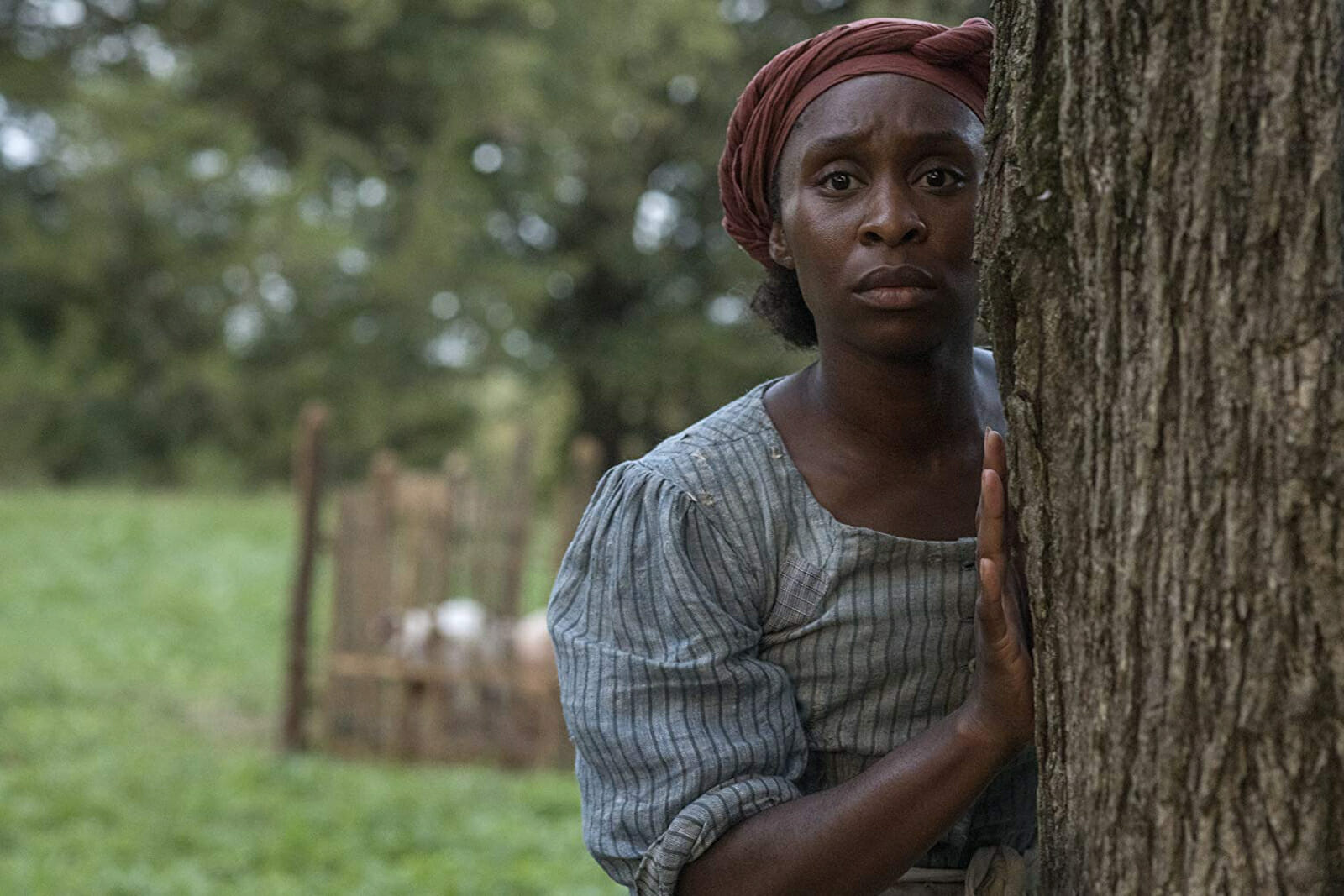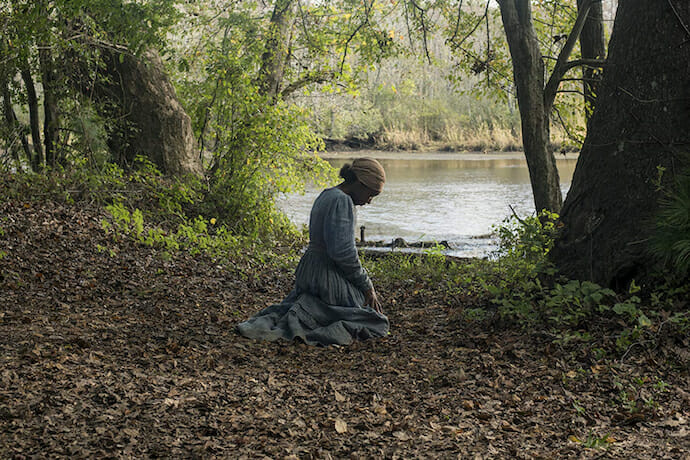
‘Harriet’ Review
As far as I can tell, there has never before been a feature film profiling Harriet Tubman. Given her remarkable accomplishments and historic standing as an iconic American hero, we should all agree that it’s high time. Harriet plays as a passion project for writer-director Kasi Lemmons (Eve’s Bayou, 1997) and her co-writer Gregory Allen Howard (Remember the Titans, 2000). Cinematically speaking, it’s a fairly formulaic biopic; however, from a historical perspective, Harriet is a story that was due to be told.
Cynthia Erivo (Widows, Bad Times at the El Royale) stars as Araminta Ross, known as Minty. She was born into slavery, and the film picks up in 1849 Maryland when she is being sold ‘down south’ by her heartless owner Gideon Brodess (an understated Joe Alwyn, The Favourite). Rather than be separated from her family, Minty runs (she does a lot of running) until cornered, and then leaps from a bridge into rushing water. It’s only after her treacherous 100-mile walk to Pennsylvania that she becomes a free woman and changes her name to Harriet Tubman – in honor of her mother and husband.
She receives help along the way. Reverend Samuel Green (Vondie Curtis Hall) plays a recurring role in her escape and later rescues. Once in Pennsylvania, she meets abolitionist William Still (Leslie Odom Jr., Murder on the Orient Express, 2017), who runs the Pennsylvania Anti-Slavery Society and introduces her to fellow abolitionist Marie Buchanon (Janelle Monae). Ms. Buchanan is a free black woman, as elegant in her manner as she is dedicated to the cause…and she’s worthy of her own story.
Harriet decides she must go back and rescue her family. She is told the trip is foolish and too risky – which doesn’t stop her from making 13 trips and saving 70 slaves. We learn of her work with the Underground Railroad – not a train, but rather a secretive organization committed to helping slaves escape to freedom. After the Fugitive Slave Act of 1850, Harriet’s work becomes even more difficult, as she must guide the slaves all the way to Canada. Omar J. Dorsey plays Bigger Long, an expert slave hunter – yes, that’s an actual occupation – hired by Harriet’s owner to capture her. When Harriet converts Walter the scout (Henry Hunter Hall), the colorful character becomes a valuable ally and strong believer.

As a young girl, Minty/Harriet had her skull cracked by a slave owner whilst standing in the wrong place at the wrong time. After that, she experienced episodes, “spells” that she claimed were visions from God. The film captures quite a few of these and treats Harriet as someone “touched.” Was this the prophecy or was Harriet an extraordinarily resourceful and tenacious woman? The message of God is present throughout, and it’s difficult to not view this as unintentionally taking a chip out of what Harriet accomplished.
Slave owners were baffled by the rescues conducted by this mythic figure they named “Moses.” Of course, they assumed it was a man, and once Harriet’s identity was exposed, her former owner was held accountable by other slave owners. It’s at that point where Gideon Brodess’ mother Eliza makes one of the most cold-hearted, racist speeches we’ve seen on film. Eliza is played by Jennifer Nettles, the singer for C&W band Sugarland. In 1858, Harriet crosses paths with abolitionists John Brown and Frederick Douglas and delivers an impassioned speech of her own in the presence of Senator William Seward (one of Booth’s targets in the Lincoln assassination). Harriet assisted Brown with recruitment for his raid on Harpers Ferry. In 1863, Harriet led the Combahee River Raid, which resulted in 750 slaves being set free.
The film might be a bit slick, but the acting is top-notch, and Harriet’s story is remarkable. Director Lemmons forgoes the brutality of 12 Years a Slave, and tries to cover Harriet’s time as a slave, her first escape off the bridge, and her continued work freeing other slaves. Harriet went on to become a Civil War spy for the Union, and later a respected elder who worked for women’s voting rights and to make latter life a bit easier for former slaves. It’s possible a movie was not the best format to tell Harriet’s story…a story that continued to develop until her death in 1913 at age 91 (or thereabouts). But it’s important to have her story documented in some way other than the textbooks kids likely won’t read. A film that tackles such a towering historical figure deserves a little slack.

